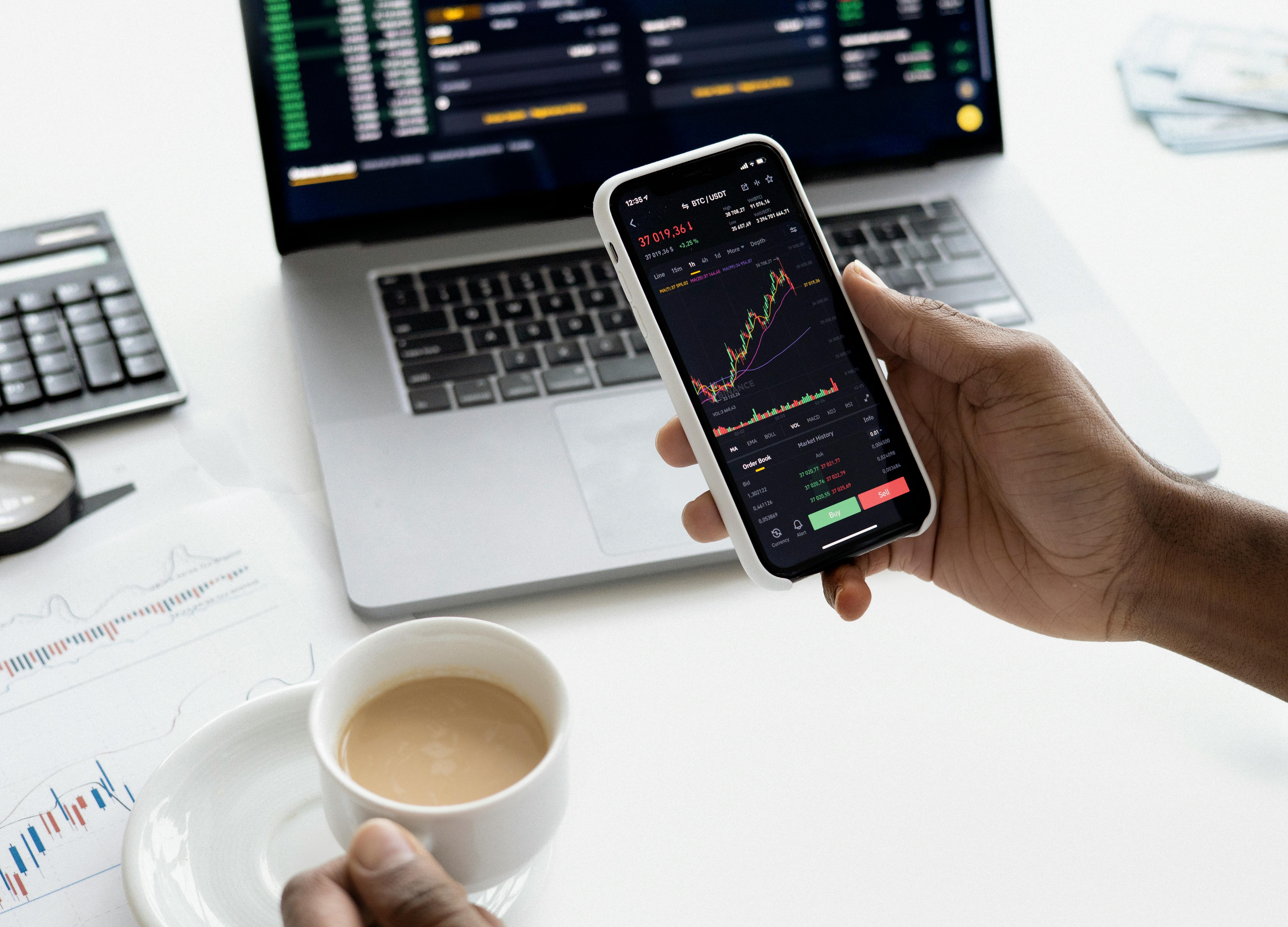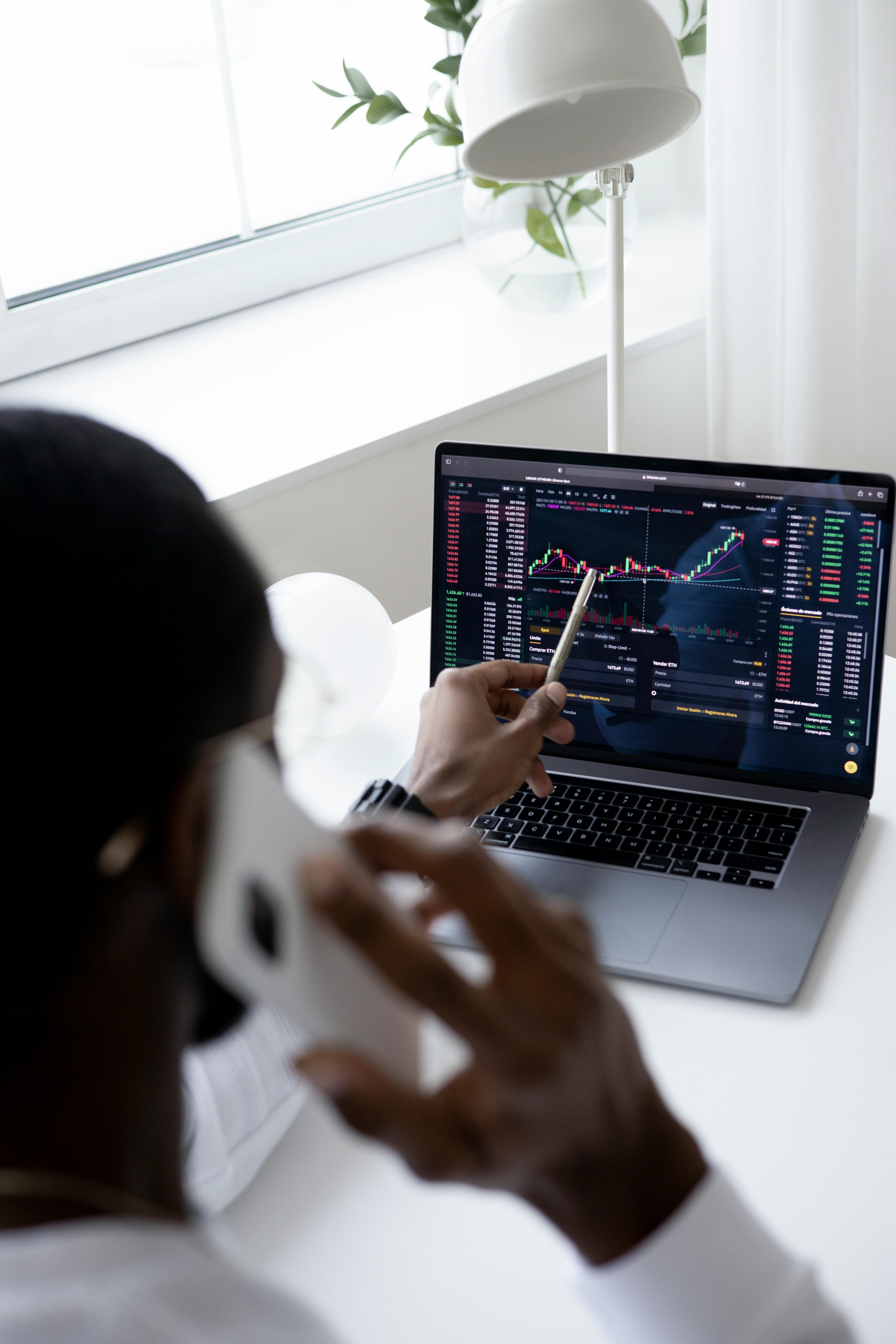ETFs Aren’t Just Passive Income — They’re Institutional Flow Vehicles Hidden in Plain Sight
Most retail investors believe ETFs are just a “set it and forget it” tool for slow, passive investing. That narrative is popular because it keeps people calm and predictable — exactly what large financial institutions want.
But here's what professionals know and retail rarely understands: ETFs are not just diversified baskets — they are financial highways through which institutional capital flows silently. When big money moves, it doesn’t pick random stocks — it enters through ETF liquidity pools because:
- ✅ ETFs let them control volume without drawing attention
- ✅ They avoid spotlight trading on single tickers
- ✅ They can exit entire sectors through one instrument
Understanding this changes everything — because when you buy ETFs intelligently, you’re not just “diversifying” — you’re riding institutional flow without needing institutional capital.
ETFs Are Not Built for You — They’re Built for Capital Movement Efficiency
If ETFs were truly designed only for small investors, they wouldn’t handle billions in liquidity per session. ETF volume behavior tells the truth: They are built as liquidity funnels — not just for retail, but primarily for hedge funds, pension systems, and sovereign money.
🎯 Think of ETFs as stealth vehicles: Instead of a hedge fund buying 50 tech stocks individually and alerting scanners, it simply buys XLK (Tech ETF) or QQQ — one trade, instant sector positioning, no noise.
And here's the twist: Retail investors who enter ETFs at the same moment institutional flow begins — ride the wave with far less risk than stock picking.

Once you stop seeing ETFs as “long-term parking” and start seeing them as institutional tracking signals, you unlock a new edge in investing.
You Don’t Have to Predict Stocks — You Just Have to Detect Institutional ETF Entries
Most retail investors waste time trying to identify “the next winning stock.” But institutions rarely pick individual stocks blindly — they enter ETFs first to test sector sentiment before allocating heavy capital into single equities.
Here’s a powerful mindset shift:
If ETF volume spikes — individual stock moves are already in motion beneath the surface.
Instead of chasing stock hype later, smart investors track ETF liquidity surges. Because where liquidity flows — opportunity follows.
- 📈 XLK (Tech ETF) spikes → Tech sector is accumulating interest → Watch AAPL, MSFT, NVDA
- 🏦 XLF (Financial ETF) volume surges → Banks are positioning → Watch JPM, BAC, GS
- 💊 XLV (Healthcare ETF) stabilizes after drop → Institutional defensive rotation → Watch UNH, PFE, MRK
ETF Volume Is a Sector Sentiment Scanner — Here’s How to Read It
ETF charts tell you something stock charts cannot: Sector intent before stock-specific headlines appear. Professionals monitor relative volume — not price alone — to identify where money is flowing quietly.
Use this interpretation framework:
| ETF Volume Behavior | Meaning | Investor Insight |
|---|---|---|
| High volume, small price shift | Institutional accumulation — stealth positioning | Prime entry window forming |
| Low volume, wide price moves | Retail-driven noise — no real capital commitment | Avoid — this is hype without backing |
| Volume surge before news | Information leak phase (institutions positioning early) | Enter before public narrative |
Trend followers look at price. Strategic ETF investors look at volume.
Volume reveals intention — price only confirms it.
ETFs Are Liquidity Routing Tools — Institutions Use Them to Move Capital Without Noise
Imagine trying to move $500 million into the tech sector by buying AAPL, MSFT, and NVDA individually — the market would notice instantly. Price scanners would pick it up, retail algorithms would trigger, momentum funds would copytrade — and liquidity would become expensive fast.
Instead, institutions take a quieter route: they inject capital into broad ETFs like QQQ or XLK first. This gives them sector exposure without revealing stock-specific conviction.
Once the ETF position is established, they start rotating into single equities underneath the ETF umbrella. This means ETF flow leads — stock movement follows.

🧠 Tracking ETF flow is like watching institutional footsteps before they decide which stock to sprint into.
ETFs Leave Footprints — How to Detect Smart Money Rotation Before Price Explodes
Most traders open individual stock charts first. Institutional trackers do the opposite — they open ETF heatmaps and flow scanners before touching a single equity chart.
Here’s a clean observation rule used by advanced investors:
| ETF Flow Behavior | Upcoming Market Behavior | How to Act |
|---|---|---|
| ETF uptrend but stocks not reacting yet | Stock breakout is being staged — delayed reaction pending | Enter early and ride the delayed equity wave |
| ETF flattening after heavy run | Sector energy cooling — profit extraction is starting | Secure gains or tighten stop — exit soon begins |
| ETF volume rising while price holds flat | Stealth accumulation — breakout loading | Begin layering in — accumulation window open |
You don’t need to predict the future — you just need to detect institutional footsteps before they start running.
ETFs Serve Two Purposes: Offensive Momentum Riding and Defensive Capital Shielding
Most retail investors only use ETFs in one way: “buy and hold for safety.” But high-capital portfolios use ETFs in two opposite strategies:
- ⚔️ Offensive Mode — Ride sector momentum early through ETF volume spikes
- 🛡️ Defensive Mode — Move capital into ETFs during sector risk to stay exposed without volatility spikes
For example, when markets enter uncertainty, wealthy funds don’t fully exit tech positions. Instead, they offload high-beta tech stocks and rotate into XLK (Tech ETF) — staying in the sector but reducing volatility risk instantly.
That’s not “going safe.” That’s called risk compression without market exit — a professional maneuver almost no retail trader applies.

Risk Compression Strategy — How ETFs Let You Stay In the Market While Reducing Drawdown Emotion
Drawdown is not just a number — it’s an emotional event. Retail investors panic not because portfolios drop, but because they drop sharply and suddenly.
ETFs allow a strategic investor to control emotional volatility without closing market exposure. Instead of exiting fully, they rotate into a lower-volatility ETF within the same sector.
✅ Example — Tech Sector Stress Period:
- Retail approach: “Sell everything until things clear up.”
- Professional approach: “Transfer from NVDA, AMD, and TSLA into XLK — keep sector exposure, cut panic triggers.”
Drawdown becomes manageable not by avoiding risk, but by controlling emotional shock. ETFs are tools for risk psychology engineering.
Billionaire Portfolios Use ETFs to Mask Liquidity Before Major Market Moves
When a billionaire fund wants to reposition aggressively, they don’t start by buying or selling individual stocks. Doing so would trigger market scanners, front-running algorithms, and draw retail attention immediately.
Instead, they start by moving capital into sector ETFs to hide intent. This allows them to shift millions (or even billions) in exposure without signaling conviction on specific companies.
This is known in institutional language as “shadow exposure.” It’s like saying: “We want exposure to tech, but we don't want you to know if we're after Apple, Nvidia, or something else yet.”
🧠 Retail investors see “ETF buying.” Institutional trackers see “position staging.”
ETF Flow Is a Pre-Move Indicator — Stocks React After ETFs Absorb Capital
This brings us to a powerful principle that almost no retail investor uses: Stock rallies often start in ETFs — not in individual tickers.
📌 Watch list rule used by funds:
- 🔍 Step 1: Monitor sector ETF volume (QQQ, XLK, XLF, XLE, etc.)
- 💡 Step 2: Spot abnormal volume behavior without obvious news
- 🚦 Step 3: Do NOT chase ETF price — instead, prepare single-stock entries under that sector umbrella
- 🚀 Step 4: When ETF breaks out, individual tickers follow with stronger momentum — that’s the execution trigger

Retail moves when stocks jump. Professionals move when ETFs whisper.
ETF Investing Is Not Passive — It's Strategic Shadow Riding
The financial industry loves the phrase “passive investing.” It sounds safe, relaxing, automated — but here’s the hidden truth:
True ETF wealth is built not through blind holding — but through timing entries with institutional liquidity shifts.
Holding long-term is fine. But entering at the same time as institutional repositioning can multiply returns — because you’re no longer just “in the market,” you’re aligned with the money that moves the market.
And that right there is the difference between “owning ETFs” and “operating through ETFs.”
Final Closing Note — ETFs Are Not a Shortcut. They’re a Signal System.
By now, the idea should be clear: ETFs are not the end — they are the beginning of understanding market flow.
Instead of asking:
❌ “Which ETF should I buy?”
Start asking:
✅ “Which ETF is attracting silent capital — and what does that reveal about the next sector move?”
Retail holders own ETFs. Strategic investors listen to them.
📚 Official Authority Sources (For SEO Trust & AdSense Relevance)
- SEC — ETF Institutional Filings Database
- Investment Company Institute — Global ETF Flow Reports
- Federal Reserve — Capital Rotation Behavior Reports
- FINRA — ETF Liquidity & Market Behavior Studies
The ETF isn’t the strategy. Timing the ETF is.
